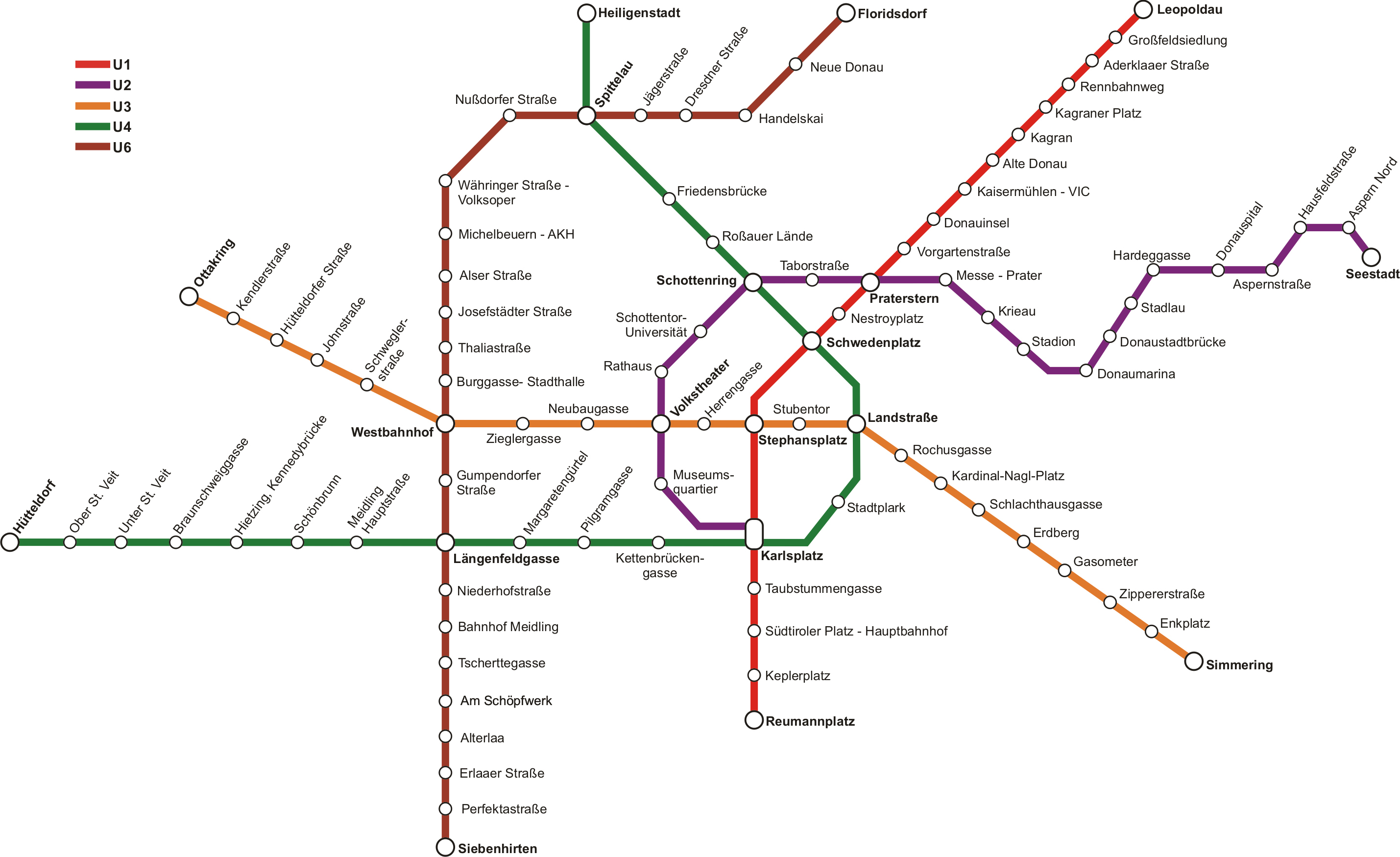
Almost all paths are underground, except for the U6 that is partly circulating by surface. These lines have a total of 104 stations. The metro has five lines: U1, U2, U3, U4, and U6. Later, line U3 was inaugurated in 1991, with the opening of the stations between Erdberg and Volkstheater. The metro was officially inaugurated on February 25th, 1978. Lines U1, U2, and U4 were the first lines to open to the public. The first station to be built was Karlsplatz. The U-Bahn began to be built on November 3rd, 1969. The government in Vienna finally decided to build the metro on January 23rd, 1968. The metro was planned to be constructed again in 1937, but it was interrupted because of World War 2. The government decided to abandon the idea of building the U-Bahn during the late 1920s due to the poor economical state of the country. The government of Vienna took interest in building the metro once more between 19. These plans were interrupted because of World War 1. Consequently, the idea of constructing an underground train was proposed in 1910. The Stadtbahn was ineffective for transporting a lot of people. The first train service in Vienna was the Stadtbahn, which was inaugurated in 1898.
VIENNA TRAIN STATION MAP HOW TO
How to use Public transport in Vienna for Tourists Historyīetween the years 18, there were plans to build the metro in Vienna, but the idea got constantly rejected. It is one of the most modern metros in Europe. The metro is ridden by over 1.2 million people per day, which makes the U-Bahn one of the most ridden metros in the world. The metro, also called U-Bahn, belongs to the Wiener Linien company, which also owns other trains, as well as buses. Rail services are comprised of the S-Bahn, the RegionalExpress, and the Regionalbahn. In other words, there is no need to pay an extra fare to travel to other zones as long as you stay within Vienna. The city's transportation network is all within one zone. Preferred Transportation Service Travel by AirĪmerican Airlines, American Eagle, and American Connection® serve 260 cities in 40 countries with, on average, more than 3,400 daily flights.The city's airport is called Flughafen Wien-Schwechat (Vienna International Airport.) The city has the following means of public transportation: buses, trams, commuter rail, rail and the metro.

Please use the Pedestrian Tunnel to access the Rideshare and Taxi drop-off and pick-up area and when going to or from the Filene Center. For safety reasons, do not attempt to cross Trap Road. Wolf Trap’s Rideshare and Taxi drop-off and pick-up area is located in the pull-off area on the west side of Trap Road, opposite the marquee. Please check the WMATA website for the latest schedule. Parking rates range from $2 (1-2 hours) to $30 (6-24 hours). The address is 1835 Capital One Drive and there are entrances on Capital One Drive and Scotts Crossing Road. *Bus service is not available for performances at The Barns at Wolf Trap, Children’s Theatre-in-the-Woods, or the Holiday Sing-A-Long at the Filene Center.īeginning Wednesday, July 20, parking for the Wolf Trap Express Shuttle for the McLean (Silver Line) Metro Station will be located at the Wegman’s parking garage.

Bus service begins 2 hours prior to showtime and runs approximately every 20 minutes.


 0 kommentar(er)
0 kommentar(er)
